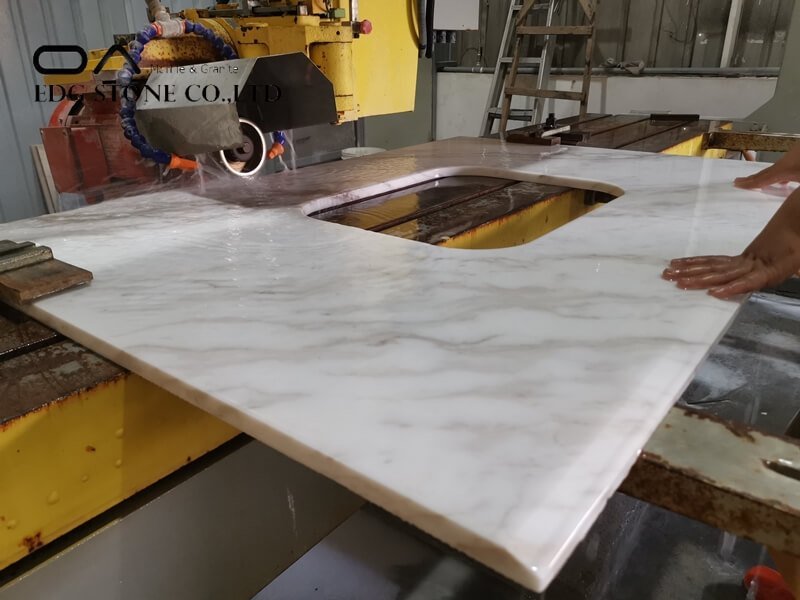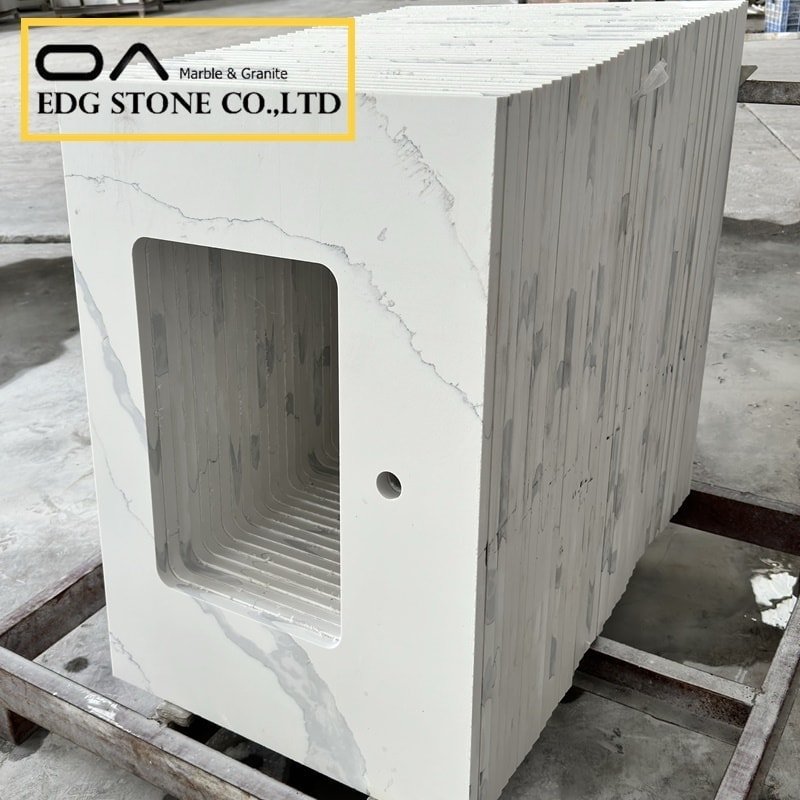With the economic development and the improvement of living standards, especially in the 1990s, kitchen furniture has been a rookie in the field of interior furniture decoration. With the continuous emergence of new materials and new processes, the speed of product upgrading has accelerated significantly, but Due to the rapid development of kitchen furniture in recent years, the quality of furniture products is incomplete, and consumer complaints about the quality of products are increasing. In order to organize and standardize the market economy, and promote the improvement of furniture product quality, kitchen furniture is produced, sold, installed and There is a normative and guiding product technical standard for services and other aspects. The National Furniture Quality Inspection Center has successively formulated the “Kitchen Furniture” Light Industry Standard and “Indoor Building Decoration Materials Hazardous Substances Limited Furniture” according to the standard project plan issued by the national competent department. National standards. At present, the “Kitchen Furniture” standard has been reviewed and approved. The draft for approval was reported in July 2001. The main technical requirements and other aspects are introduced.
1. Main technical requirements of kitchen furniture standards
After the “Kitchen Furniture” national light industry-standard passed the standard review meeting in May 2001, according to the standard revision opinions proposed by the review meeting, the original standard submitted for review was revised and adjusted, and the draft was submitted for approval in July 2001 and submitted to the country. Standardization Management Committee. The main technical requirements related to the standard are:
1. The main dimensions of kitchen furniture
The main dimensions of kitchen furniture are mainly based on the current construction status of the kitchen and the functional characteristics required by the dietary habits of Chinese residents, as well as a reference to some Eurasian Community (EN) standards on the coordinated size and safety of kitchen furniture. The main dimensions are as follows: :
1) The height of the base cabinet: 700mm-900mm;
2) The depth of the bottom cabinet: ≥450mm;
3) The depth of the wall cabinet: ≤400mm;
4) Other product auxiliary size requirements.
2. Dimensional deviation and shape and position tolerance
It mainly assesses the deviation between the design size of the product and the actual size of the product, as well as the technical requirements for the warpage, flatness, diagonal, position difference, and seam of the cabinet parts.
1) The width, depth, and height of a single cabinet of a group of base cabinets or wall cabinets have a deviation of ±2mm;
2) The width, depth, and height of the independent cabinet have a deviation of ±3mm;
3) The dimensional deviation of the slotting of the embedded equipment table is only allowed to be positive, and its value is less than 5mm;
4) The opening size of the kitchen cabinet where the built-in equipment is placed should meet the installation requirements of the equipment, and its size deviation is only allowed to be positive, and its value is ≤10mm;
5) For other shape and position tolerances, please refer to the requirements specified in 5.3 Table 2 in the “Kitchen Furniture Standard”.
3. Material requirements
1) The tree species or artificial boards used in the product should be consistent with the label;
2) The wood used in the product should meet the requirements specified in 5.4.2 of the standard. Insect-eaten wood and decayed wood with insects, through cracks, etc., untreated to reach resin capsule material, etc., and other minor material defects, such as insects Holes, cracks, etc. should be repaired and processed:
3) The amount of formaldehyde released from wood-based man-made panels should meet the requirements of the corresponding standards.
4. Appearance quality requirements of metal parts
Mainly refers to the surface coating and appearance quality requirements of metal parts.
1) The metal coating (exposed parts) should have no defects such as color difference, bottoming, sagging, etc.;
2) The metal coating (exposed parts) should be free of defects such as scorching, blistering, pin-holes, etc.;
3) Welding parts of metal parts should be seamless, dislocation, scarring, slag, and other defects.
5. Product processing requirements
Mainly refers to the specified requirements for the processing and installation and connection of product parts.
1) For parts made of wood-based panels, all non-connecting surfaces should be edge-sealed;
2) The cladding, edge banding, or post-molding edge on the parts should also be tight, smooth, and not allowed to bubbling, cracking, degumming, indentation, and other defects;
3) The surface of the processed part shall not have defects such as chipping, knife marks, sand marks, etc.;
4) The chamfers, arcs, and lines on the surface of the product should be smooth and uniform;
5) The combination of parts and components should be firm and not loose;
6) Various parts such as opening and closing doors, drawers, and pull baskets should be closed flexibly, and fittings and hardware connectors must be installed with defects such as missing nails and penetrating nails;
7) The front edge and back end of the bottom countertop should be treated with flooding and water blocking;
8) The veneer or finish should not have obvious chromatic aberration, fading, fading, paint leakage, stickiness, and other defects.
6. Product installation requirements
1) The connection between the cabinet and the cabinet or the wall should be firm and tight;
2) When installing the base cabinet and wall cabinet, it should meet the avoidance requirements of various pipelines and meters;
3) There should be no leakage of water in the installation of various pipelines and sinks in the base cabinet furniture;
4) The distance between the positions and distances required for the installation of various equipment in the cabinets should meet the required notch process hole requirements;
5) The seams between the split tables should be ≤0.2mm;
7. Physical and chemical performance requirements
1) The physical and chemical performance requirements of the bottom countertop: mainly include high-temperature resistance, water vapor resistance, dry heat resistance, pollution resistance, and other standard requirements;
2) The physical and chemical properties of other parts of the cabinet have requirements for acid and alkali resistance and pollution resistance;
3) Metal parts including handles and built-in special accessories are resistant to salt spray and acid spray ≥6.
8. Mechanical performance requirements
Mainly to assess the structural strength and service life test of kitchen furniture (see standard 5.13 for details). The main ones are:
1) Mechanical properties of cabinet countertops: static load, vertical impact, and durability test;
2) The mechanical properties of the bottom cabinet: shelf bending and shelf support strength, bottom plate strength, sliding door (sliding door, flip-door, etc.) drawer (including basket) durability test;
3) Drawer (including pull basket and strength test of main structure and underframe;
4) Stability test of the independent cabinet;
5) Ultimate strength test of the wall cabinet.
9. Structural safety requirements
Mainly refers to the movable countertop parts of kitchen furniture should be kept at ≤8mm or ≥25mm, drawers, rolling doors, and parts cannot slide off when in use or have burrs, blades, etc. and damage the human body.
10. Requirement for flame retardancy of table
It mainly refers to the performance regulations that may be encountered by the kitchen furniture operating countertops. At the same time, this regulation is only valid for contractual provisions. The standard stipulates that the oxygen index of various material countertops is ≥35.
11. Evaluation of product inspection results
This standard is based on the comprehensive evaluation of the inspection results of the products, and the evaluation is based on grades, namely, a superior product, first-class product, and qualified product. If the product does not reach the qualified product, it is the unqualified product.
Second, the furniture hazardous substances limit requirements
At present, the release and content of toxic and harmful substances in interior decoration materials or furniture products are very prominent, which seriously affects people’s physical and mental health. The implementation of the important thinking of “Three Represents” by General Secretary Jiang Zemin to guide China’s standardization work is under the leadership of the State Council Under the care and leadership of the General Administration of Quality Supervision, Inspection and Quarantine of the People’s Republic of China, in July 2001, the General Administration issued a national compulsory standard to formulate the “Limits of Hazardous Substances in Interior Building Decoration Materials”, which mainly include: wood-based panels, interior wall coatings, wood coatings There are 10 aspects of radioactive substances, such as adhesives, carpets, wallpaper, furniture, floors, concrete admixtures, and building materials. The State Administration of The draft of the standard has been completed, and the standard review meeting is being organized to make appropriate amendments or adjustments based on the review opinions of the standard review meeting, and strive to submit for approval in December this year. Now we will introduce the relevant technical content of this standard.
1. Furniture formaldehyde emission regulations
This standard specifies the amount of formaldehyde released from furniture, requiring a formaldehyde emission of ≤5mg/1. The technical indicators here are for the formaldehyde emissions of furniture (including kitchen furniture) products. The main indicators of the standard refer to some technical requirements in the national standard “Formaldehyde Emissions from Artificial Panels”, and also refer to the relevant indicators in the Japanese Industrial Standards. Provisions made in conjunction with the current situation of furniture products.
1) The test method of this standard adopts the 24-hour dryer method in 4.12 of GB/T17657-1999 “Test Method for Physical and Chemical Properties of Wood-Based Panels and Facing Panels”.
2) The amount of formaldehyde released from wood-based panels currently being formulated by the National Academy of Forestry is regulated by the dryer method, category A is ≤4mg/L, and category B>4mg/L-≤mg/L.
3) The Japanese Industrial Standard (JIS-A-5908-1986) adopts regulations (mg/L) for the formaldehyde emission of wood-based panels: F1 grade ≤ 0.5, F2 grade ≤ 0.5-5, F3 grade 30-60.
2. Requirements for volatile organic compounds (VOC) limits for furniture coatings
The determination and control of the total volatile organic compound (VOC) (without formaldehyde) of furniture is mainly to control the limit of harmful substances in furniture surface coatings. At present, there is still a gap between the overall furniture coatings in my country and advanced foreign countries. In order to prevent coatings that do not meet the requirements of the standard from being used in furniture finishing, this standard is mainly used to measure the quality of the coatings and processes used in furniture through the inspection of furniture products.
1) This standard stipulates that the total volatile organic compounds of furniture (without formaldehyde) is ≤300ug/m3.
2) The test method of this standard is mainly through sample preparation, gas collection, and gas chromatography.
3. Limitation of soluble metals in furniture coatings
The vast majority of furniture uses wood coatings as surface decoration. Some of the soluble heavy metal elements in the coatings exceed the content specified by the standard. For users, they may be absorbed by the human body by touching the furniture, causing damage, and causing certain diseases. Therefore, this standard sets limits on soluble heavy metals, which mainly include:
1) The heavy metal elements of soluble lead, cadmium, chromium, and mercury in paint, varnish, nitrocellulose or similar substances used in furniture products do not exceed the following regulations.
Soluble lead: 90mg/kg
Soluble cadmium: 75mg/kg
Soluble chromium: 60mg/kg
Soluble mercury: 60mg/kg
2) Test method Samples are collected and prepared through the furniture surface coating film and measured by the atomic absorption spectrometer. With the development of science and the successive formulation and implementation of kitchen furniture industry standards and furniture hazardous substances limit standards, it has provided important basic technical standards for the country to rectify and regulate the market economy order, rectify and regulate the furniture market, and provide important basic technical standards for kitchen furniture. The production, distribution, and decoration units and consumers have provided a standard inspection basis. With the implementation of standards and the strengthening of market supervision and spot checks, future kitchen furniture will develop towards fully displaying individual culture and environmental protection and intelligence.







